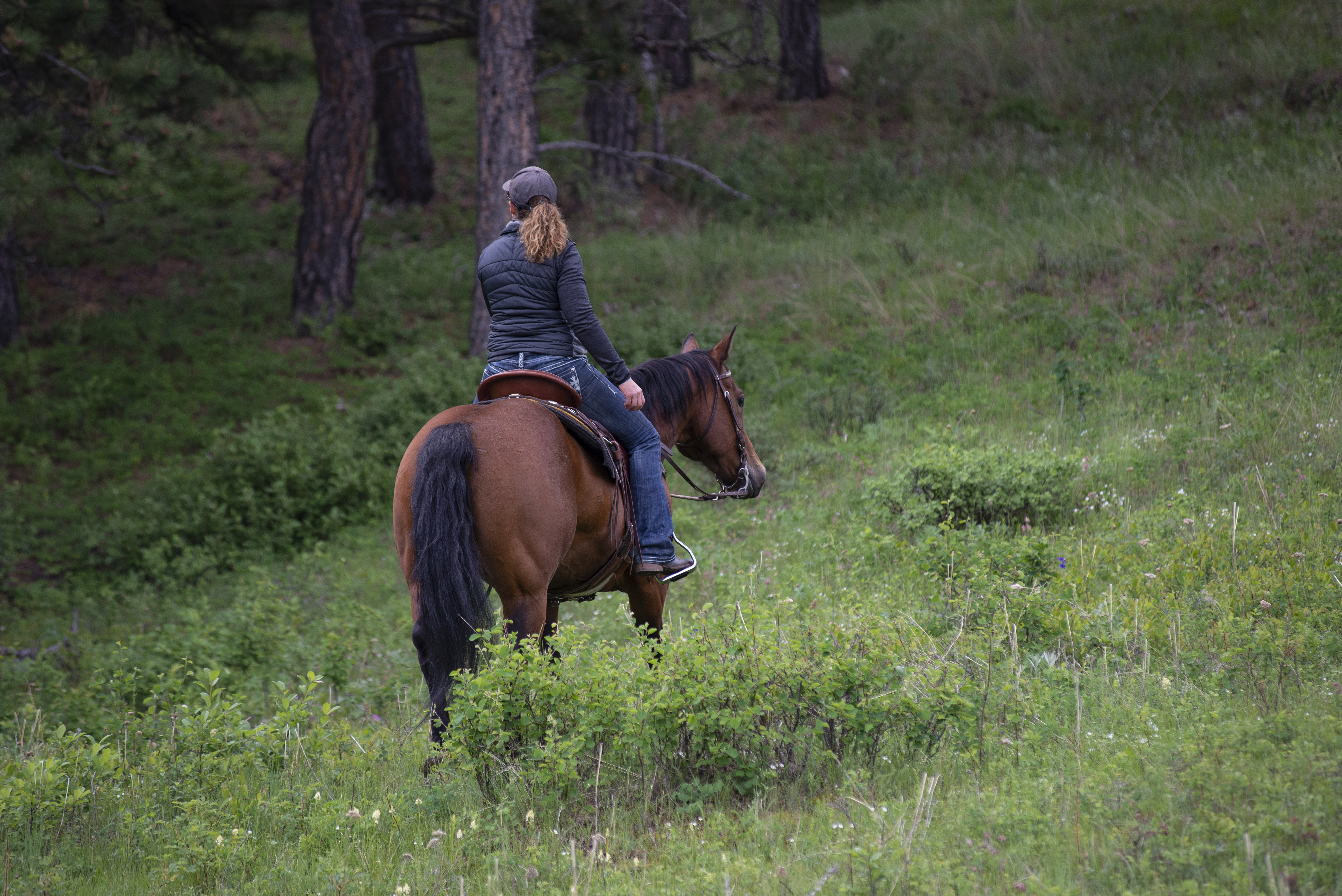Never get lost on the trail
- April 23, 2024
- ⎯ Joanne Meszoly
Some people are blessed with an innate directional sense; blindfold them and drop them off in the woods, and they’ll find their way out in no time. Others become disoriented in shopping malls. If you fit into the latter category, you’re not going to get into trouble on a single trail that loops back and delivers you to the starting point. Yet even seasoned trail users can get turned around on poorly marked tracks or become disoriented when forced off familiar ground by an unanticipated obstruction along the way. You have to have a rudimentary understanding of navigation and remain keenly observant of natural and/or man-made trail landmarks in order to keep your bearings.

“I find that people tend to get lost when they rely on someone else,” says Montana wilderness rider Dan Aadland. “For example, you plan to head back separately after lunch, but you weren’t paying attention because you were following someone else. Then it’s easier to get lost.”
The quick fix: Once you realize that you are lost, do not panic or blindly rush off toward nowhere in particular. Few parts of the country are truly removed from civilization, and even seemingly isolated trails can be quite close to roads and homes. Simply standing quietly and listening for sounds of traffic or human activity in the vicinity may be all you need to do to find your way out. A cell-phone call to report your situation to a concerned party will at least be a comfort and possibly an encouragement to get you back to where you belong, but save some battery in case you need to make a later call.
Horses (and dogs, if one’s along for the ride) usually have excellent senses of direction, but turning all the directional decisions over to your horse when you’re lost is risky. The path he chooses toward home may not be easily negotiated, and rough terrain may force him to head the wrong way; even horses can get lost and discouraged. “Horses do have a homing instinct, but home may not be where you parked your trailer,” says Aadland. “In snowstorms and in flatter parts of the country, horses have saved lives by getting people home. But in the backcountry, your horse may not get you to the trailhead.”
The best strategy when lost on the trail is to turn around and head back the way you came. “Your horse has done you one big favor,” says Aadland. “He’s made some tracks getting you where you are. Unless it’s a loop where it’s essential that you complete it, you can probably backtrack.” Turning around on a trail may trigger your horse’s mental compass, and he may help you decide which path to choose at trail junctions.
If you’re only mildly off course and decide to continue onward in the general direction of home or the trailhead, you can use natural landmarks, such as rivers and streams, to lead you there. Just be sure you’re heading in the right direction. “I heard about one rider who got lost and started following a river,” says California competitive-trail-riding judge Jamie Dieterich, “but it flowed in the opposite direction than she thought. If you’re lost, don’t keep getting more lost.”
In the worst-case scenario, when you have no idea which way to go, find a clearing and wait for help (now’s the time to use that cell phone). In a heavily forested region, you’ll probably head down to a valley; in open country, you may be more visible on higher ground.
Prevention: Not getting lost comes down to good planning and taking some general safety measures. Before you set out, tell someone where you are going–the trail name/color code (if so-marked) or the general direction you plan to ride–as well as the estimated length of time you’ll be away. This routine practice could be a lifesaver if you’re injured while riding alone and have to wait for help. Carrying a map, a compass or a global positioning system (GPS) receiver also greatly reduces your likelihood of becoming lost, especially in remote areas where your cell phone and associated apps aren’t likely to work. Practice map-reading skills and familiarize yourself with the navigational tools before setting out.
However you keep track of your position, look frequently behind you to take a “mental picture’ of the terrain, especially at intersections and forks. Note any landmarks that will jog your memory when you return to them. Also count how many right- or left-hand turns you make as you go along. Remember, it’s the rearview going out that becomes the return vista.
Some hunters, hikers and riders mark trails and trail intersections with surveyor’s tape as they go along, but it’s a practice that spoils the wilderness unless the tape is removed on the way back. “I can see having the tape in your trail kit,” says Aadland. “If someone’s hurt, you may need it to mark the trail, but when it’s used frequently and left all over the place, it’s unsightly.”
Trail tip: If riding after sunset disorients you, dismount and lead your horse. Rely on natural light, when possible, rather than a flashlight. “It takes about 20 minutes to develop your night vision,” says Aadland, “but you lose it in just a second by striking a match or turning on a light. If you must use a light to study a map, close one eye to speed up the return of your night vision.”
Don’t miss out! With the free weekly EQUUS newsletter, you’ll get the latest horse health information delivered right to your in basket! If you’re not already receiving the EQUUS newsletter, click here to sign up. It’s *free*!





